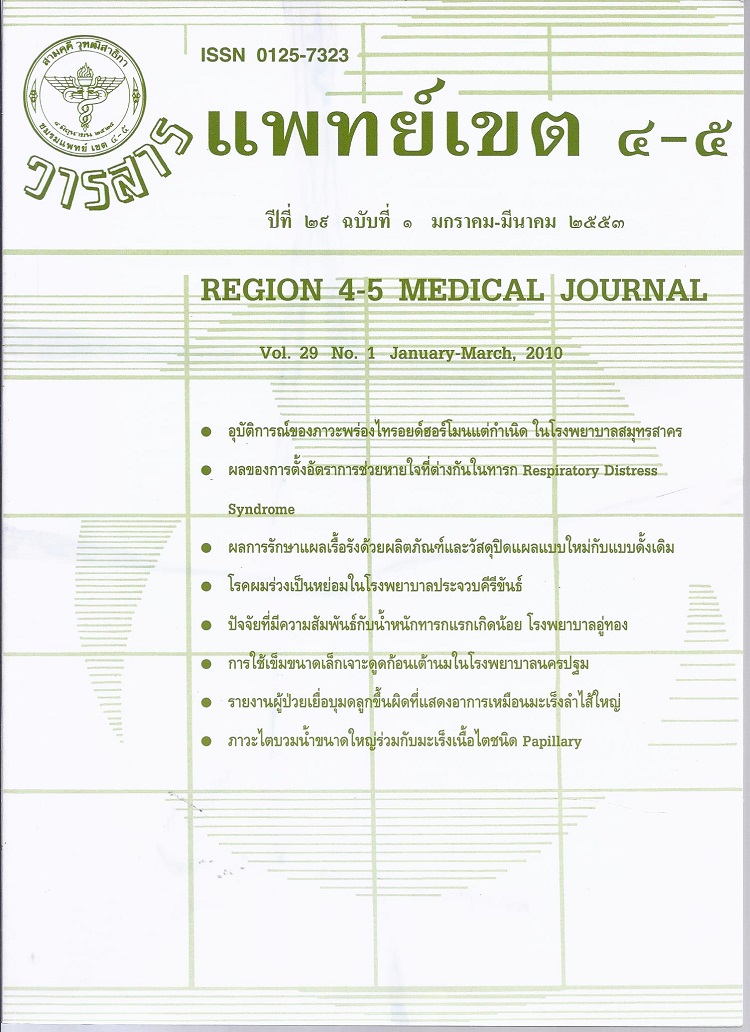เปรียบเทียบผลของการตั้งอัตราการช่วยหายใจที่ต่างกันในทารกคลอดก่อนกำหนดที่ป่วยด้วยโรค Respiratory Distress Syndrome
บทคัดย่อ
The effectiveness of two different rates of artificial ventilation, 40 breaths per minute (bpm) and 70 bpm, were studied in twenty preterm infants weight from 740 to 1,620 grams. All of them suffered from respiratory distress syndrome (RDS) and needed mechanical ventilation shortly after birth. They were randomized into two groups, 10 patients in group A and 10 patients in group B and were ventilated at rate of 40 and 70 bpm respectively. The outcome was patients’ respiratory pattern which was evaluated at 30 min, 8 hours, 16 hours and 24 hours after the intermittent mandatory ventilator (IMV) performing. The results showed that 5, 7, 9 and 10 patients in group A and 8, 9, 10 and 10 patients in group B breathed synchronously with ventilator at 30 min, 8 hours, 16 hours and 24 hours respectively. Patients in group B took less time than group A to synchronize but it was not significantly different (p > 0.05). In addition duration of intubation in group A (mean 7.71 ± 4.38 days) was longer than that in group B (mean 5.69 ± 1.86 days) but it was not statistically significant (p = 0.27). These results might suggest that in acute phase of RDS fast ventilator rate could minimize discomfort to the patients but both treatments were comparably effective to ventilate
infants with RDS.
ดาวน์โหลด
เผยแพร่แล้ว
รูปแบบการอ้างอิง
ฉบับ
ประเภทบทความ
สัญญาอนุญาต
ลิขสิทธิ์บทความเป็นของผู้เขียนบทความ แต่หากผลงานของท่านได้รับการพิจารณาตีพิมพ์ลงวารสารแพทย์เขต 4-5 จะคงไว้ซึ่งสิทธิ์ในการตีพิมพ์ครั้งแรกด้วยเหตุที่บทความจะปรากฎในวารสารที่เข้าถึงได้ จึงอนุญาตให้นำบทความในวารสารไปใช้ประโยชน์ได้ในเชิงวิชาการโดยจำเป็นต้องมีการอ้างอิงถึงชื่อวารสารอย่างถูกต้อง แต่ไม่อนุญาตให้นำไปใช้ในเชิงพาณิชย์




